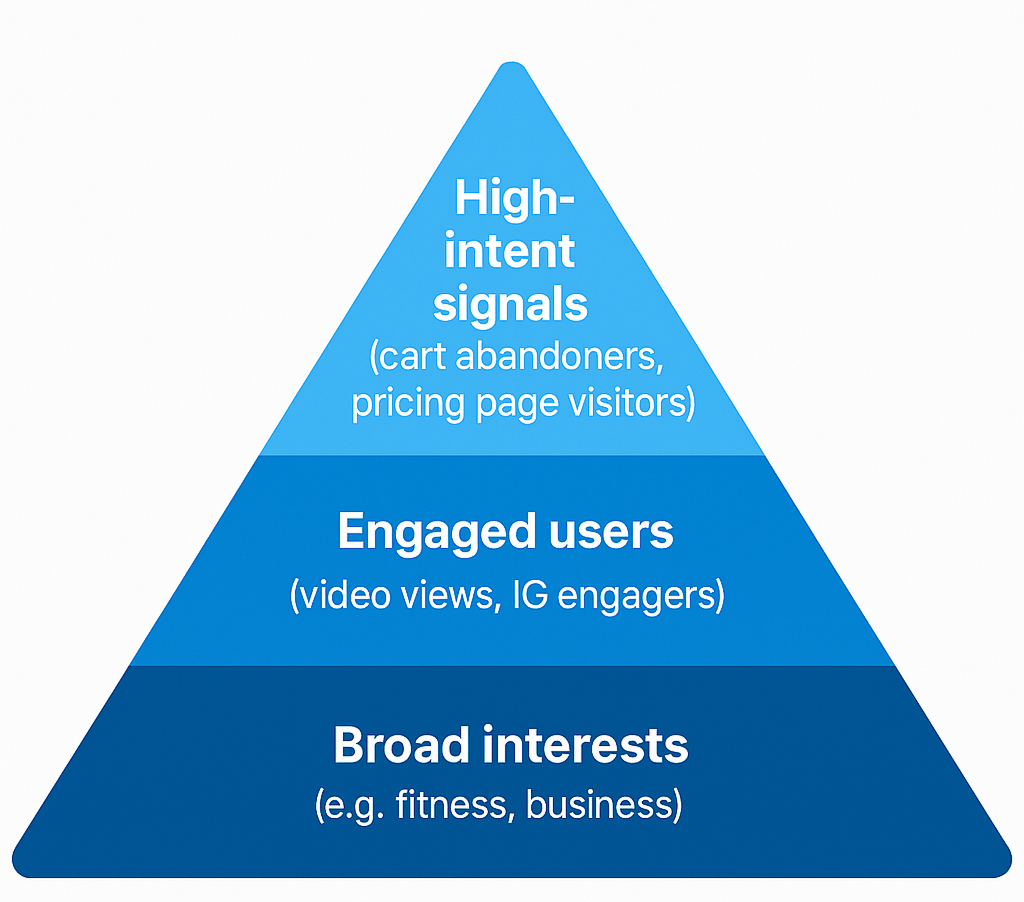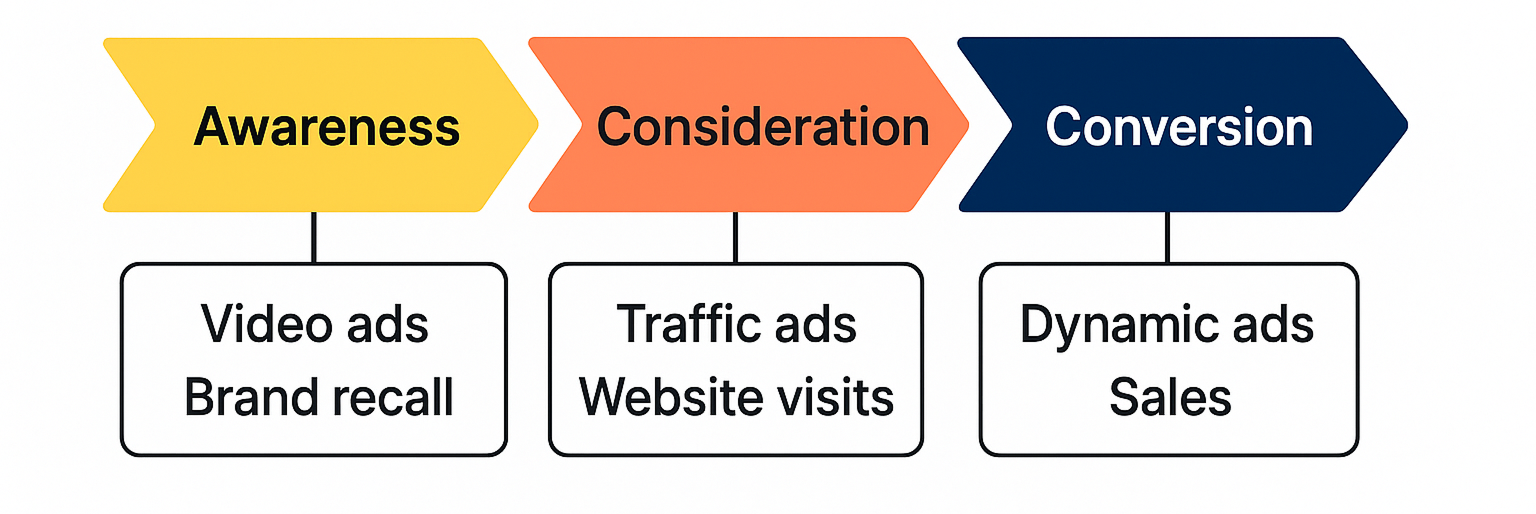Some ads convert, scale, and sustain. Others flop — even when they look promising on paper.
This isn't just about better visuals or higher budgets. The real difference between average and winning campaigns lies in how they’re planned, targeted, and evolved over time.
Here’s a detailed look at what separates standout campaigns from the rest — with practical steps to help you build better ones.
1. Clear Audience Strategy From the Start
The foundation of any winning campaign? Laser-sharp audience targeting.
Average advertisers go broad. They might use interest-based targeting like "fitness enthusiasts" or "small business owners." But broad categories often lack purchase intent.

Winning campaigns take time to define their audience behaviorally and contextually. They:
-
Use behavioral signals (like video views, page visits, or form starts) to find intent.
-
Layer in custom audiences — such as email lists, CRM exports, or Facebook Group members.
-
Avoid over-targeting and audience overlap, which is a common reason ads stall. Read more in Why You See 'Ad Set May Get Zero' on Facebook and How to Fix It.
Not sure how to define a meaningful audience? Follow this step-by-step targeting guide.
2. Creative and Objective Are Aligned
You can have great visuals and still get zero results — if your campaign objective doesn’t match your creative.
Here’s how winning campaigns stay aligned:
-
A conversion objective needs a creative that drives urgency and trust (social proof, scarcity, etc.).
-
A lead gen objective should offer a low-friction value exchange — like a free guide, not a direct pitch.
-
A reach or awareness campaign should use scroll-stopping visuals with branding front and center.
Too many advertisers get stuck in the learning phase because their campaign settings and creative send mixed signals. If that sounds familiar, review Meta Ad Campaign Objectives Explained.
3. Intent-Driven Ad Sequencing
One of the most overlooked traits of winning campaigns is sequencing.

Rather than one generic ad, top performers run multi-step funnels:
-
Awareness ad (e.g., educational video): Introduces a problem and hooks interest.
-
Consideration ad (e.g., carousel with tips/testimonials): Builds trust, answers objections.
-
Conversion ad (e.g., offer + CTA): Pushes action when intent is high.
This structure keeps the user moving forward rather than hitting them with the same message over and over. If you're seeing creative fatigue, you may need to map your campaign to your funnel.
Want to explore funnel mapping strategies? Check out Facebook Ads Funnel Strategy: From Audience Identification to Conversion.
4. Metrics That Inform Action — Not Panic
Averages panic when CTR drops. Winners ask why. They know that not every drop is bad — and not every spike is good.
Here are metrics that winning advertisers pay close attention to:
-
CTR (Click-Through Rate): Good for gauging creative appeal, but only if paired with...
-
CPC (Cost Per Click): Useful, but only in relation to conversion.
-
CVR (Conversion Rate): The most telling of true funnel performance.
-
ROAS (Return on Ad Spend): Never track it blindly. Read How to Analyze Facebook Ad Performance Beyond CTR and CPC to spot misleading signals.
Smart marketers tie metrics back to intent and stage — not just surface data.
5. Proactive Campaign Iteration
Winning campaigns evolve quickly. But they do it methodically.
Here’s what consistent optimization actually looks like:
-
Weekly creative testing on warm audiences (testing without context wastes budget).
-
Clear hypotheses: "Will a testimonial CTA outperform our generic CTA?"
-
Use of performance breakdowns (age, gender, placement) to double down or eliminate waste.
Many advertisers struggle to exit the learning phase. If that’s you, start here: How to Finish the Facebook Learning Phase Quickly.
And if you're unsure where to start your testing? Begin with the element most likely to impact scroll behavior — your headline, then your creative. More on this in What to Test First: Creative, Copy or Audience in Facebook Campaigns?
Final Thoughts
A great campaign isn’t built in a day. It’s built through discipline, structure, and feedback loops.
If your ads aren’t scaling, ask:
-
Is the audience too cold or too broad?
-
Is the objective correct for the funnel stage?
-
Are my creatives aligned with buyer intent?
-
Am I testing small or just throwing things at the wall?
Winning campaigns rarely start perfect. But they are designed to learn fast — and improve with every dollar spent.

